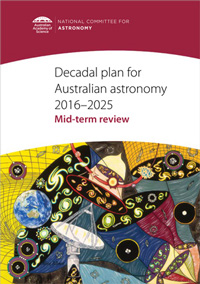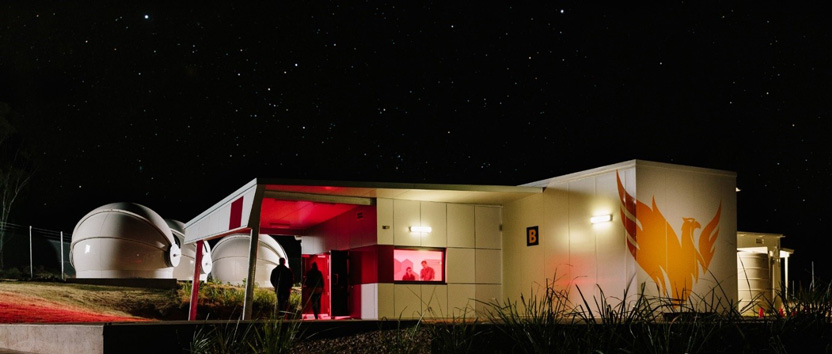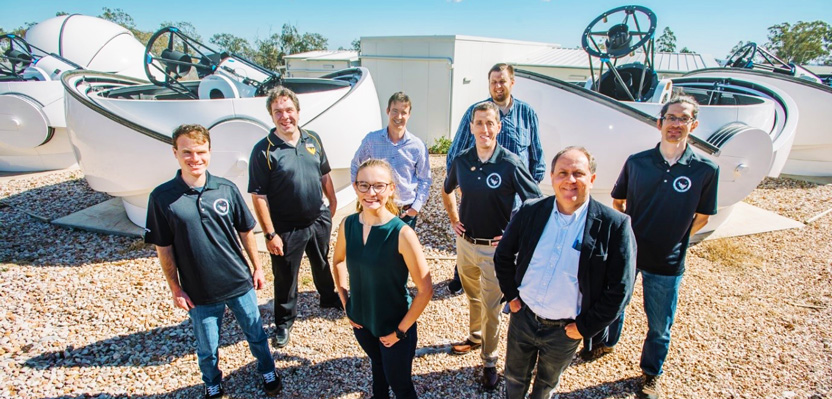
Contribute to the Space and Radio Science newsletter
If you would like to list your event or opportunity, or otherwise contribute to the next edition of the Space and Radio Science newsletter, please send content to icsu@science.org.au. Contributions will be published subject to approval by the National Committee for Space and Radio Science.
September 2020
The National Committee for Space and Radio Science held its annual meeting in late June. The discussion centred primarily on adjustments as a result of COVID-19, including the timeline for the release of the strategic plan, ‘Australia’s Future in Space’. The plan is currently in the final stages of drafting with the aim being to hold community consultation in October and November (dates to be confirmed). In line with these changes, the launch of the strategic plan has been pushed back until early 2021, possibly in conjunction with the COSPAR General Assembly in Sydney. Information will be made available on the National Committee for Space and Radio Science website and through the Academy’s social media channels as details are confirmed.

The recently released mid-term review of the Decadal plan for Australian astronomy showcases the growing astronomy sector in Australia and recommends possible growth areas for Australia’s astronomy capabilities. The mid-term review makes nine major recommendations for the next five years and articulates the continued investment in major facilities and infrastructure that is necessary to ensure Australian astronomers continue to play a world-leading role in answering key questions about our Universe.
Contributed by Jonti Horner, University of Southern Queensland
Atop a hill in Queensland’s Darling Downs sits Minerva-Australis—the only astronomical observatory in the southern hemisphere dedicated to the search for planets orbiting other stars. The facility, owned and operated by the University of Southern Queensland (USQ), was built using funding from the Australian Research Council and a global consortium of universities. The array of four telescopes was officially launched in July 2019 and has been scouring the skies to follow up on the potential discoveries being made by NASA’s Transiting Exoplanet Survey Satellite, TESS.

That search has recently yielded several fascinating discoveries. The facility helped to confirm the existence of a baby planet, several times larger than Earth, orbiting the star AU Microscopii—which is itself a juvenile, and the second closest baby (or ‘pre-main sequence’) star to our solar system. The AU Microscopii system also hosts a disk of debris—left behind from the formation of its planets—that resembles the Edgeworth-Kuiper belt which lurks in the solar system’s icy depths beyond the orbit of Neptune.
Watch the video: NASA’s TESS and Spitzer missions discover world orbiting unique young star.
The team at USQ used Minerva-Australis to measure the tilt of the orbit of that baby planet to the equator of its youthful star—revealing that the planet moves in the same plane as the star’s equator, and as the disk of material that surrounds them both. This stands in stark contrast to many other planetary systems that have been observed to date, but is strongly reminiscent of the solar system—where the Sun, the planets, and the debris that orbits them all tend to move in the same plane.

That discovery, and the many others coming to which the Minerva-Australis team are contributing, show the great benefits of researchers being able to build and run their own dedicated facilities. While almost all the major astronomical observatories around the world have been hamstrung this year by the effects of COVID-19, the Minerva-Australis facility has been working continuously, allowing a small university in regional southeast Queensland to play a vital role in the journey of discovery being led by NASA and the TESS mission!
The Department of Home Affairs is calling for submissions on the Protecting Critical Infrastructure and Systems of National Significance consultation paper to help it develop an enhanced regulatory framework regarding critical infrastructure. Space is mentioned as one of the critical sectors, but most of the others also have a dependence on space-derived services.
Specific questions of interest are summarised on pages 32-33 of the document. Closing date for submissions is 16 September.
Prime Minister Scott Morrison and Defence Minister Linda Reynolds’ latest Defence Strategy Update and Force Structure Plan has revealed $270 billion in extra funding for Australia’s defence capabilities, with the space domain a major beneficiary. The Australian Government commits to enhancing Australia’s sovereign space capabilities through the announcement of a series of capability investments that seek to enhance Australia’s sovereign defence and space capabilities.
Combined with the announcement of closer defence, security and space ties with Japan, the increased emphasis and encouragement of Australia’s growing space sector will have implications for Australia’s science and security capabilities.
Perth-based LatConnect 60 has announced a global space partnership to build and deploy new satellites to boost Australia’s national security capability. Amid rising global tensions, the new low-Earth orbit smart satellite constellation will provide close to real time data on request to clients, giving Australia a boost to its strategic observation capabilities.
The Northern Territory Government and Australian Government have started a collaboration for space. They have signed a Memorandum of Understanding which focuses on creating high-tech local jobs and new technologies. This collaboration is part of the Australian Government’s investment of over half a billion dollars to create another 20,000 jobs and grow the space sector to $12 billion by 2030.
The Parkes radio telescope, otherwise known as The Dish, has been officially recognised for its contribution to Australian astronomy and humankind’s understanding of the Universe with its inclusion on the National Heritage List.
UNSW researchers will share $6 million in grants from the Australian Government’s Cooperative Research Centre Projects (CRC-P) program for projects to develop a new space traffic management system and to make cell and gene therapy more affordable. The CRC-P program supports collaborations between industry, researchers and the community. The focus is on linking researchers with industry to develop products with commercial use.
The EU operates space programs which provide services such as navigation and weather forecasting to European citizens. The UK has made significant contributions to the development and delivery of these programs in recent decades, but there will be changes to future involvement at the end of the Brexit transition period. Read a report on EU space programs.
A Time Magazine article discusses the American Space Force and was granted access to find out what the Space Force does and the purpose of the Space Force: America Really Does Have a Space Force. We Went Inside to See What It Does.
NASA has announced the new launch date for the James Webb Space Telescope as 31 October 2021 due to consideration of technical challenges and impacts from the COVID-19 pandemic. The space telescope is set to ‘revolutionise our understanding of the Universe’.
A Chinese research team has detailed use of quantum key distribution (QKD) to provide secure entanglement-based communication between ground stations 1120 km apart using satellite-based QKD. They report this as an important step toward a truly robust and unbreakable cryptographic method for remote users over arbitrarily long distances. Source
University College London has undertaken a review of the benefits of the Emirates Mars Mission program. It highlights the distinctive nature of the mission in catalysing national development, innovative capture of transformative value, building future capacity, and amplifying long-term regional and global leadership. Source
The July 2020 issue of the SCOSTEP/PRESTO Newsletter is now available. It includes updates and research stories from members, and upcoming events.
Nominations are open until 10 September for the 2020 Defence Connect Australian Defence Industry Awards, which seek to recognise Australia’s top defence industry professionals and businesses. More information on the awards.
Find out about CSIRO’s innovative new capabilities in space technology, and how it can partner with organisations to support space R&D needs and transform the space industry together. This free online event offers 2.5 hour sessions on each of 9 and 10 September, sharing CSIRO’s key research highlights under the themes of ‘Earth to orbit and Earth observation data analytics’ and ‘Moon/Mars missions and humans in space’.
The AGU 2020 Fall Meeting will be held online from 1 to 17 of December 2020. With more than 1,000 sessions scheduled to work for multiple time zones around the world. Content will also be live and on-demand so you can watch at your convenience.
© 2025 Australian Academy of Science